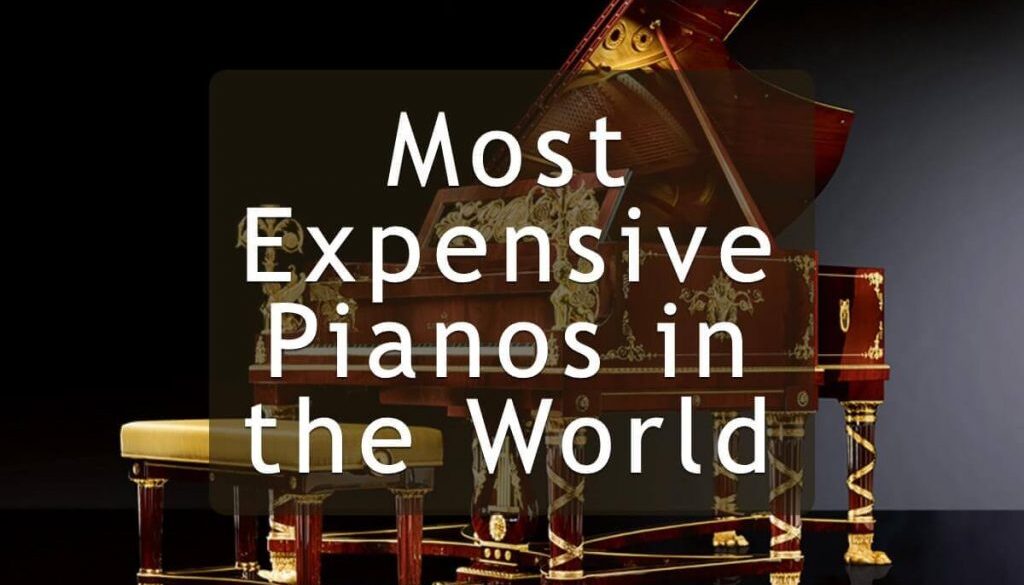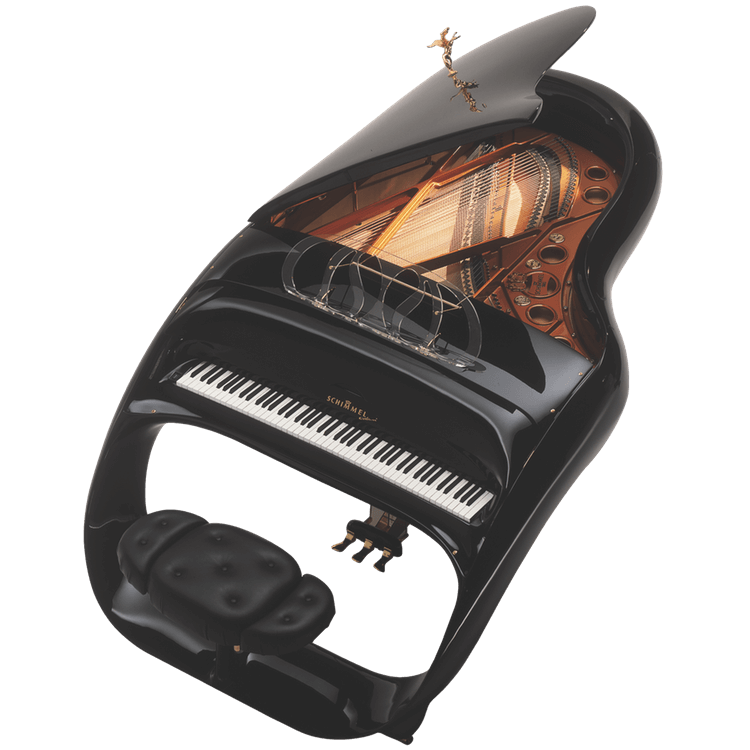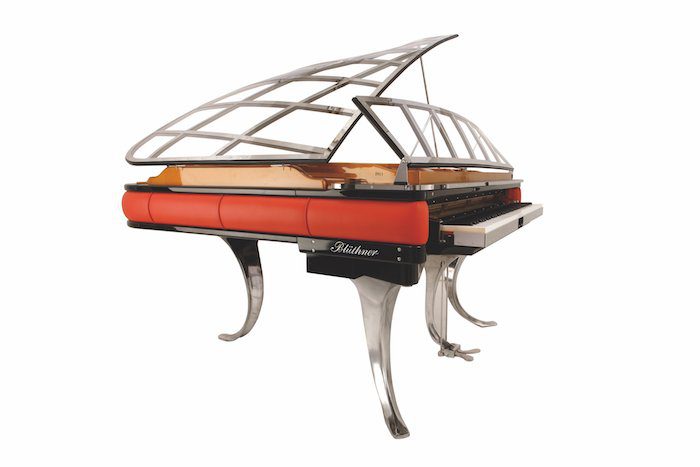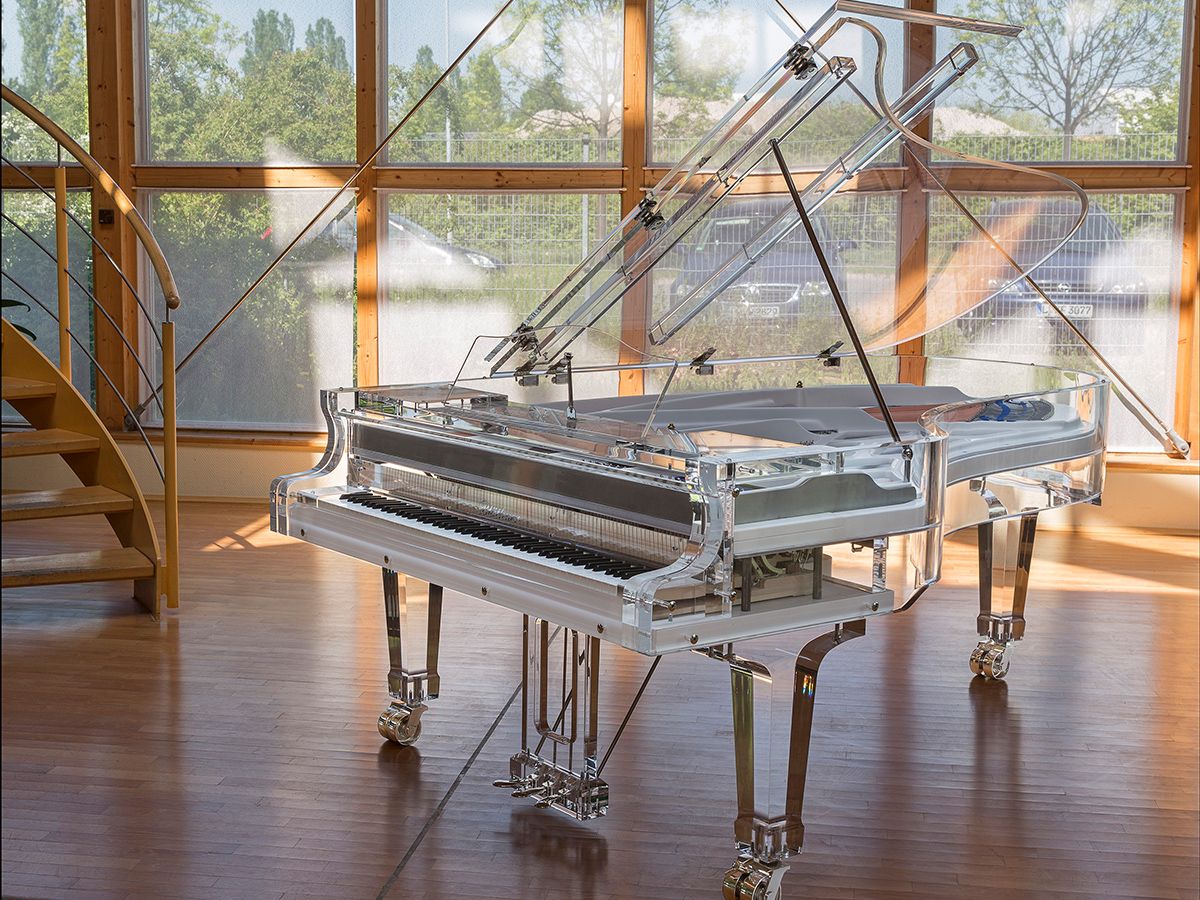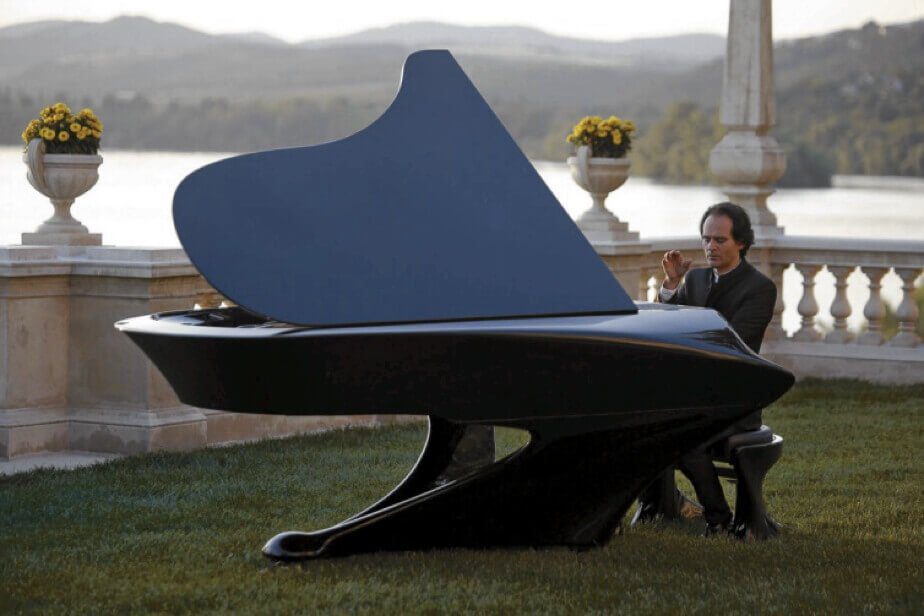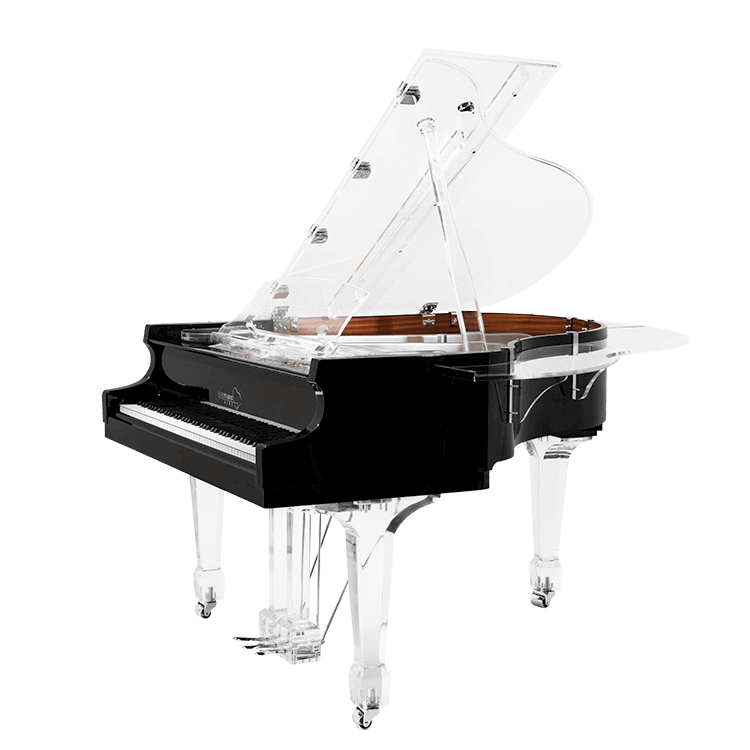The Most Expensive and Extraordinary Pianos in the World
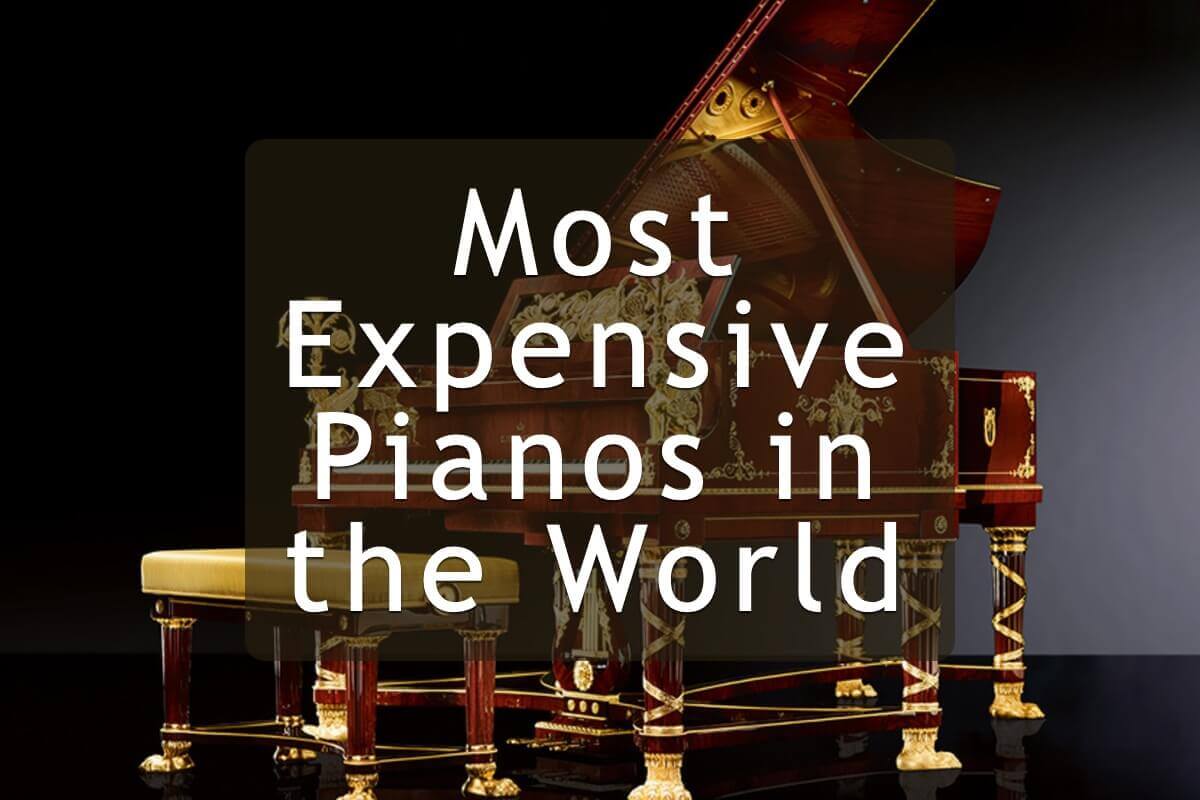
The world loves the most extraordinary and the most expensive. We love it in automobiles like Ferraris, in buildings like New York’s One Trade Center, and we love it in luxury pianos as well. Here is our list of the ten most extraordinary and most expensive pianos available on the market. (Some more available than others!)
There are a few piano builders who handcraft extraordinary instruments – pianos so well made that they have surpassed all others in performance and virtuosity. Brands such as Bluthner, Bosendorfer, Bechstein and Schimmel. What they put under the lid of their pianos distinguishes them from others, producing unrivaled and unique sound. This already makes them expensive grand pianos.
But for the true connoisseurs of beauty, the case that holds that musical magic is just as important. To satisfy the eye as well as the ear, luxury piano builders have designed some unusual piano cases whose exteriors are as spectacular as the inner construction of the instruments.
Luxury piano cases are customized for buyers who seek interesting piano motifs. There’s almost limitless possibilities for the bespoke art case and the customized piano bench, as well, using rare woods, gemstones, metals, paintings, mosaic, etc.
Given that a truly superior piano purchase is likely a once in a lifetime investment, it seems appropriate that such pianos should be customized for the client, personalized and made as unique as possible.
1. SCHIMMEL PEGASUS
This astounding piano was, at first, just a daring flight of fantasy on the part of the eccentric German designer Prof. Luigi Colani and Nikolaus W. Schimmel who inherited a pioneer spirit from his grandfather and father before him. They had a desire to free the grand piano from its traditional form which had hardly changed in the last 150 years. What resulted was a bold sculpture and their most expensive grand piano. Schimmel captured the imginations of the industry with this futuristic design, naming it Pegasus. Long the symbol of poetry (among other things) the winged horse offered inspiration to the artist, and in its modern iteration, breaks the mold of traditional grand piano design to offer that and more to pianists and lovers of art objects. The great musician Prince owned a Pegasus grand piano in his Toronto home.
The Pegasus costs in the range of $350,000.
2. BLUTHNER PH GRAND
Amazingly, Bluthner’s PH Grand Piano was designed in 1931 by Poul Hennigsen, the famous progressive Dane (often known as PH) who was a prolific designer, author and critic, between the world wars. He was quoted as saying “All political art is bad – all good art is political.” And indeed this uber-modern grand piano carries the cultural avant-garde aura of pre-war “das Kabarett” (the birth of Munich “cabaret” which sprang to life as a new and vital form of entertainment at the turn of the century then exploded into Berlin’s popular political and uncensored forum for artists fighting the moral hypocrisy of the bourgeoisie and performing satirical and variety and music hall extravaganzas into the 20’s and 30’s.)
His futuristic design and Bluthner’s excellence in German piano building (this is the manufacturer that built the piano for the airship Hindenburg) created an iconic instrument that holds its own to this day with clean Danish lines and German craftsmanship.
The price range of this amazing instrument is $155,000.
3. BLUTHNER LUCID IDYLLIC EXCELLENCE
The most dazzling vision of any piano dreamer: a fully transparent, crystal grand piano that appears to be floating: the Lucid iDyllic Excellence. This super luxury grand piano is transformed into an illusion of fantastic lightness and fragility by its transparency. The precise geometry of the architecture and the micro precision of the custom facets give the lucite the reflective attributes of crystal, making it jewel like and the stuff of dreams. Customized orders sometime add LED lights to further enhance the magical qualities of this fairytale art piece.
Prices for the 7’8” range from $255,000.00
4. BOSENDORFER OPUS 50.000
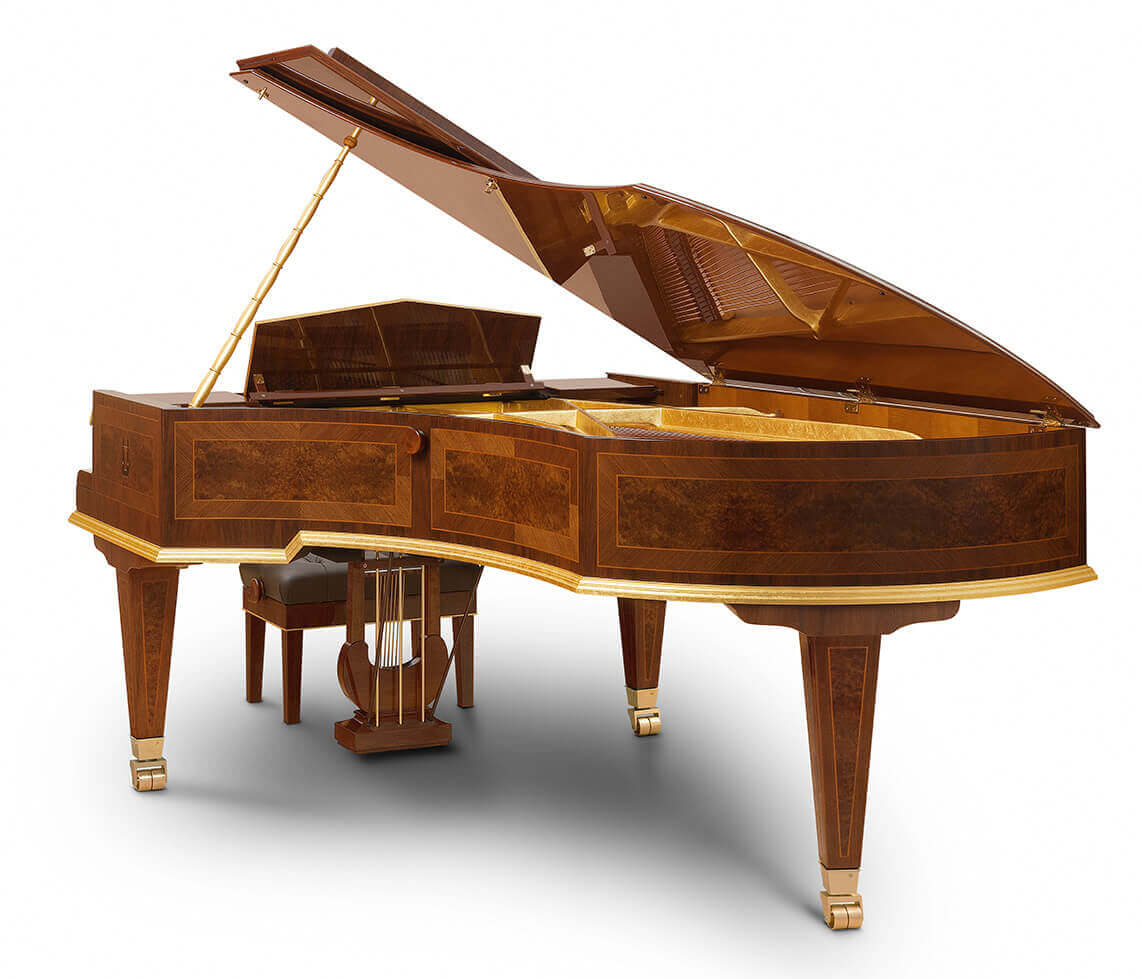
A collector’s item, the 50,000th Bösendorfer Grand, made on the occasion of the 185th anniversary of Bösendorfer, combines exquisite sound with the aesthetic beauty of neoclassical Vienna. Its incredible art case presents itself as perfect in form and elegance. Opus No. 50.000 is inspired by two instruments that were created for the 1867 World Exhibition in Paris, both of which were neo-classical in concept. One was designed by Theophil Hansen (this year is the 200th anniversary of his birth), the famous Danish architect who designed many major buildings in Vienna including the Parliament and the world famous concert hall, the Musikverein, with its extraordinary Goldene Saal and Brahms Saal. The other was designed by Anton Grosser who incorporated golden caryatids. Inspired by the golden caryatids that still adorn the concert hall of the Wiener Musikverein, two of these figures decorate the front of the piano. The caryatids were cast in bronze using the traditional lost wax technique, before they were gilded using 24 carat gold.
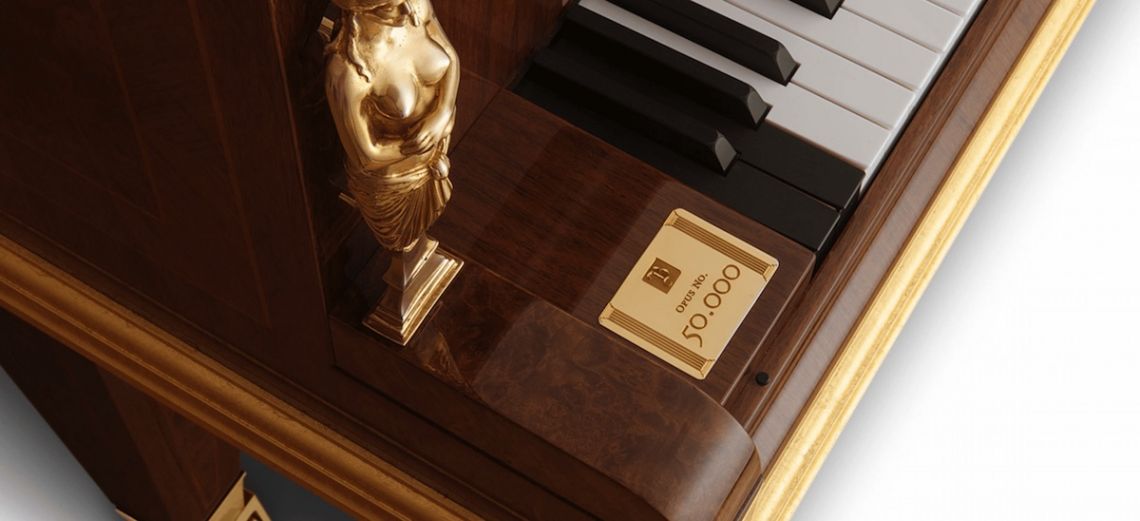
A vital stylistic element – the elegant and delicate use of gold – characterizes the quintessential design of this piano. Covered with gold leaf, the sublime golden interior of the piano is extended to the outer trim of the body of the instrument. Not boastful pomp but exquisite elegance. The Opus No. 50.000 is a neo-classical instrument for the 21st century – opulent, beautiful yet not out of place in any setting.
This unique piano is not only an enchanting instrument, but also an unforgettable piece of Vienna. This seven and a half foot Imperial model piano has 92 keys.
The price to replicate this collectable would be in the range of $750,000.
5. BOSENDORFER WOMAN IN GOLD
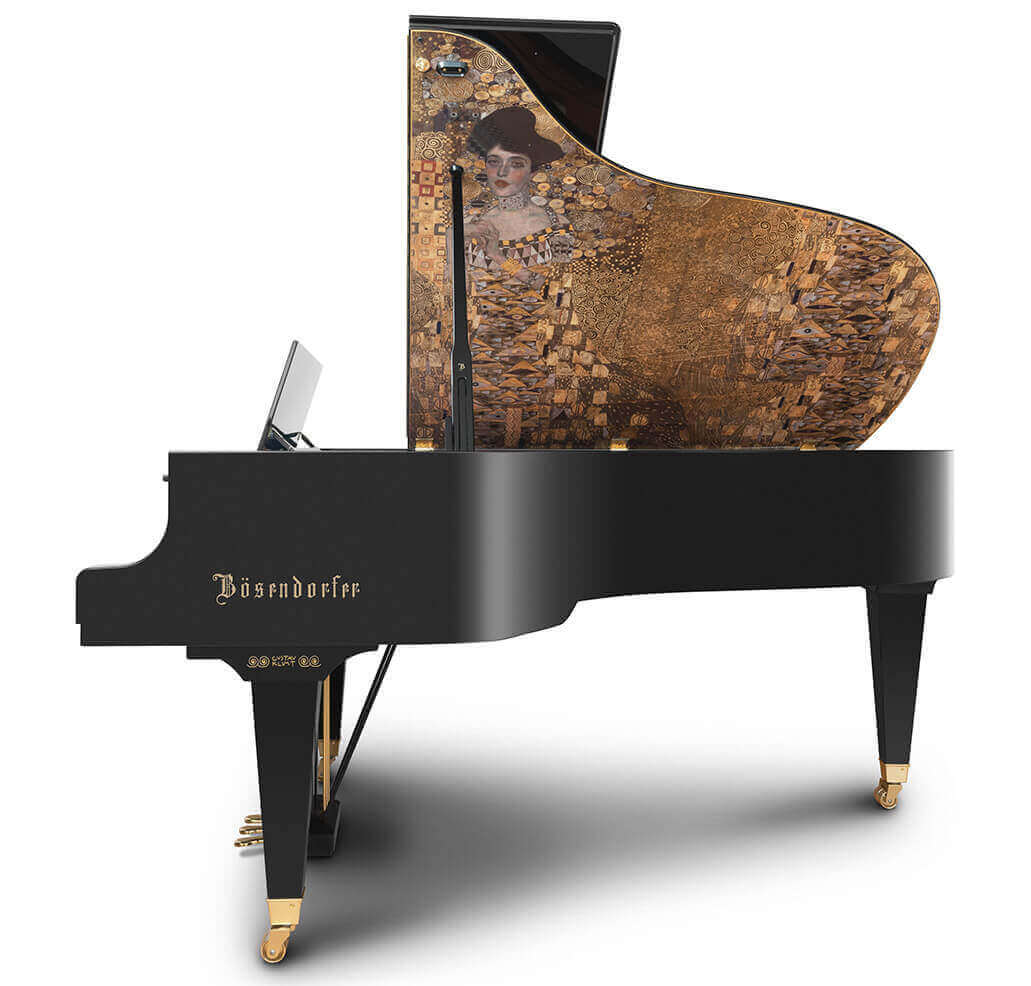
Gustav Klimt ( 1862-1918 ), one of the most famous Austrian painters and artists of the Viennese Art Nouveau, and Bösendorfer, both greatly represent Austrian culture, dedicated craftsmanship, as well as artistic expression. The Woman in Gold model is dedicated to the portrait of Adele Bloch-Bauer, and is the second of Bösendorfer’s Klimt Series In 1903, Ferdinand Bloch-Bauer, wealthy entrepreneur and connoisseur commissioned Gustav Klimt to paint a portrait of his wife. Klimt agreed and in the same year, traveled to Italy. The gold-decorated church mosaics inspired him to translate this rich artistic expression to contemporary art. Over the following years, Klimt produces more than 100 sketches and studies for the dedicated painting. He experiments with various techniques until he succeeds in applying extensive amounts of silver and gold leaf to the oil painting.
With sophisticated reprographic techniques the high resolution image of the original painting was replicated on the inside of the Bösendorfer Grand Piano lid. Because the Klimt painting had the skilled application of gold leaf, the Bösendorfer artisans additionally lavishly gilded the music desk and the leg tops to reflect the golden expression of Art Nouveau. The Klimt model is limited to 25 instruments and each Grand Piano carries an individually crafted brass plate.
The approximate price range would be $170,000 to $185,000 depending on size.
6. C. BECHSTEIN SPHINX PIANO
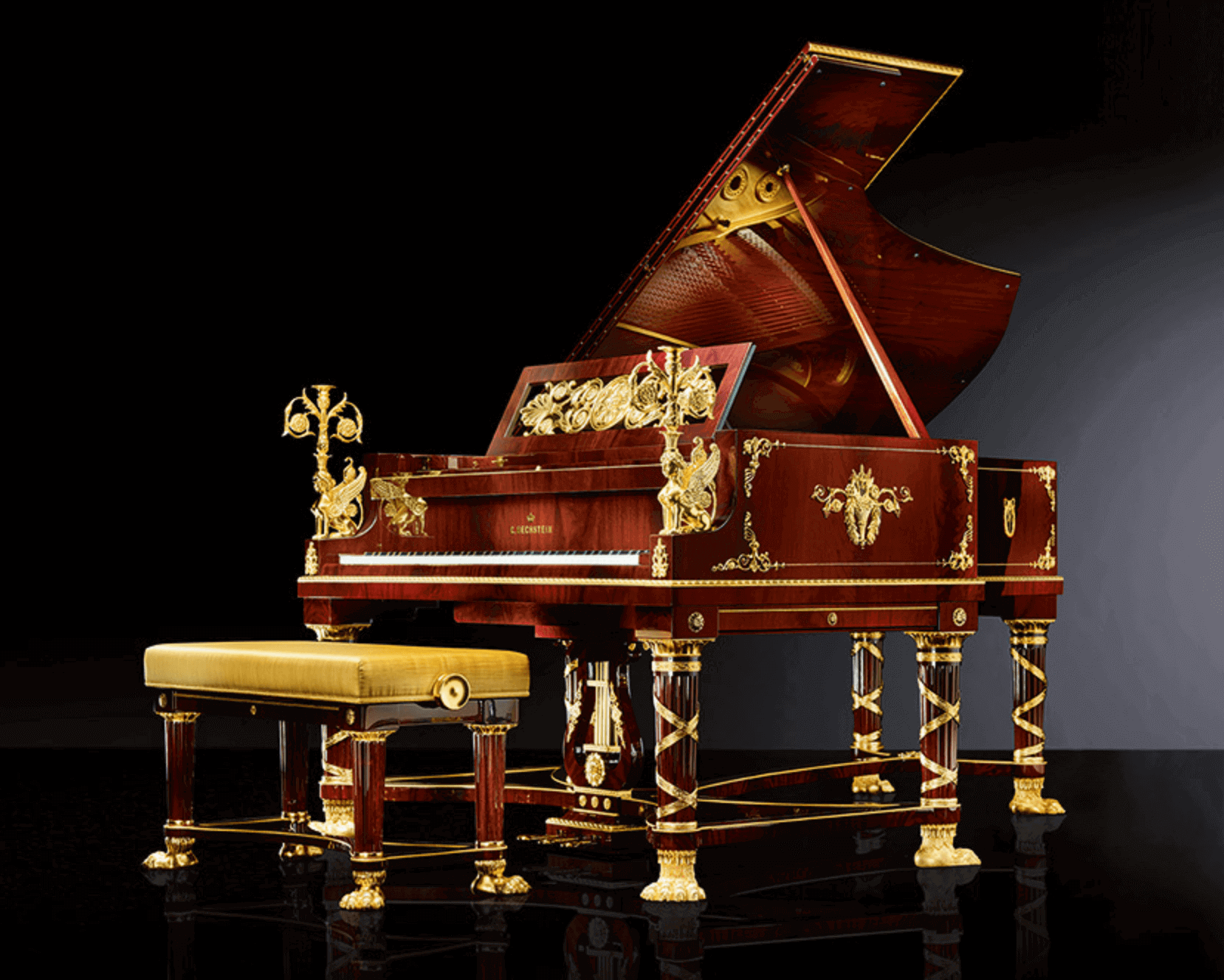
The first model of the C. Bechstein Sphinx was built in 1886 as a special exhibition piece for C. Bechstein, London. A grand piano fit for a king, the rococo styling and the array of gilt adornments on the case are an homage to the great Empire style, a period dating back to the time of Napoléon Bonaparte.
Mythical sphinxes, figures from Greek mythology, are creatures with the head and torso of the graceful human female coupled with the lower body of the lion. They, half human, half animals, appear to stand guard over this valuable piano treasure.
Wings give this hybrid creature a sense of weightlessness. Greek, Egyptian and Roman motifs in the Empire style, such as lion’s feet, laurel or oak leaves, are presented in lavish form. The basic shape of the decorations to be applied are carved to scale in wood and then used as a mould for the bronze models, using a wax-melting process. The bronze castings are then cleaned and refinished before finally being fire gilded. The fire-gilded figurines are given their fantastic, elegant sheen by means of extensive hand polishing using polishing stones.
Bechstein’s unique research centre has revived old manufacturing techniques to hand-craft this one-of-a-kind grand piano. The reproduction of the historic, fire-gilded bronze figurines was overseen by a leading restorer and master wood carver of Dresden’s Frauenkirche and other famous buildings.
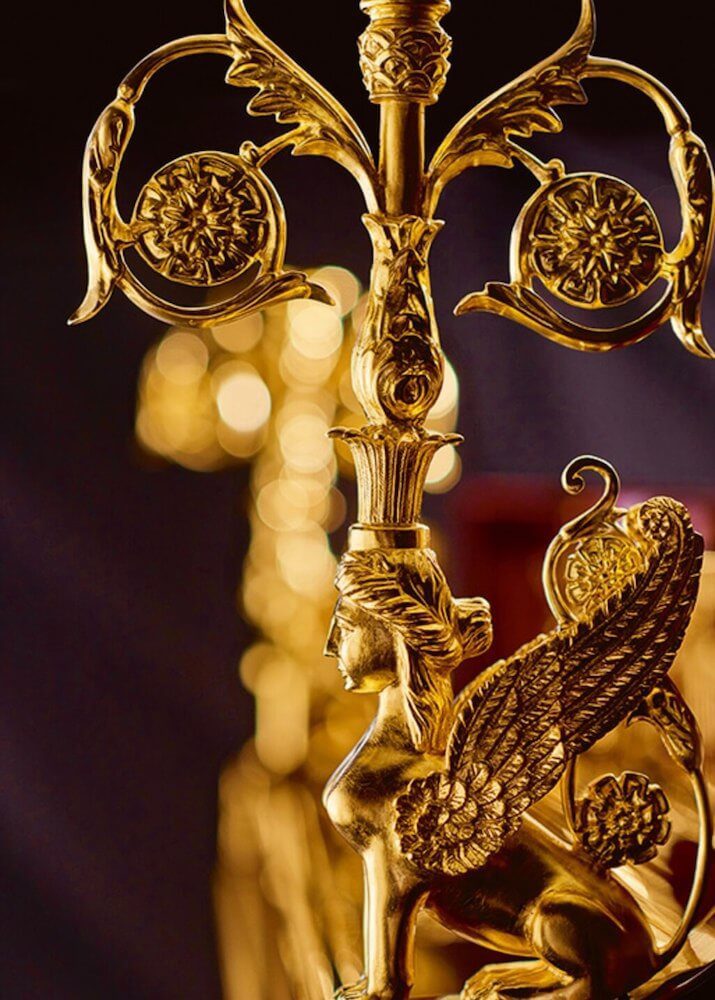
The acoustic body of the Sphinx grand piano, the musical heart inside this replica, is the C. Bechstein B 212 model, a professional grand piano of the master class series. Its touch and tone qualities fulfil the highest of requirements and enchant anyone that plays the instrument.
The 24 Karat gold and 1800 hours of production make this one of the most expensive pianos in the world with a price tag of $1,2 million dollars.
7. BOGANY BATPIANO
One of Europe’s leading pianists, Gergely Bogányi has designed a new piano sometimes called a ‘Batpiano’ with a tone to match its bat mobile looks according to those who’ve played it in Budapest.
Franz Liszt is bigger than Bat Man in Hungary so perhaps the country that produced the idolized 19th-century composer should also produce a startling upgrade to the instrument that made his name: the piano.
Gergely Bogányi, its Hungarian creator, has already spent 8,000 working hours on it in his workshop in Budapest. The sheer visual presence of the gleaming “Bogányi” belies the fact that the instrument is only a few centimetres shorter than a Steinway model D.
From behind the keyboard, the sound is sustained and airy, as the curved left leg – it has only two – directs the sound from under the piano, as well as from above, creating a spacey effect.
While the tone of the instrument, with its patented carbon composite soundboard, is rich, the action is incredibly light, recalling older models from the dawn of the piano, before manufacturers began to prioritize power to appeal to romantics such as Liszt. Bogányi explained that this smoothness is down to his use of the modifications first suggested, but never widely used, by the 19th-century Hungarian piano maker Lajos Beregszászy. He installed an agraffe system – a guide anchoring the strings – on the bridge.
Tamás Horváth, a sound engineer at Bartók Rádió, said “It has a unique tone, although this is characteristic of all great piano producer products, such as Steinway, or Bösendorfer – they all have a specific sound.”
Gerald Clayton, a four-time Grammy award winner who has had more playing time on the Bogányi than most, said “It feels like you are in a spaceship, like you are hovering above gravity. When you play a lot of notes, or you play a chord, the sensation is different. It’s super-clear.” Horváth agreed that the Bogányi had “a great sound for jazz pieces.”
Boganyi’s partner Francois Bandura is a wood craftsman and sculptor who channeled his artistic energies into a state-of-the-art luxury automotive interior decoration. The combination of his unique skills proved just the ticket to create the Boganyi piano, which has as its motto: “Sound Beyond Time.” The piano also has the capability of recording and automatic playing as an add-on.
Bogányi estimated the overall project has cost him over a million dollars over the past decade, mostly funded by Hungary. The piano debuted in the United States in 2016 at the Newport Music Festival.
So what is the cost? “You will have to save up,” Bogányi said. “With these materials, it will definitely not be cheap.” The bare bones price of the piano is $375,000.
8. STEINWAY & SONS FIBONACCI
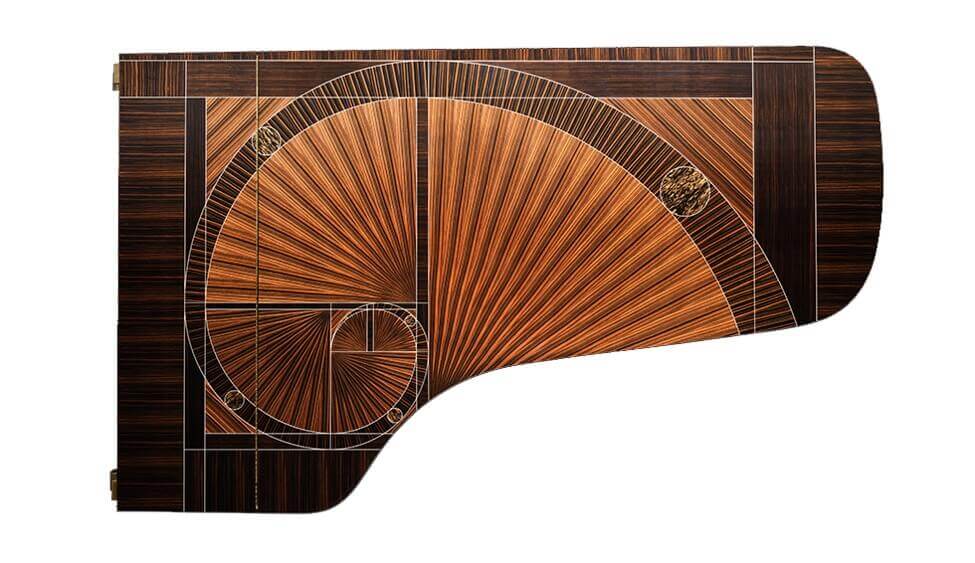
In celebration of Steinway’s production of its 600,000th piano, master artisan, Frank Pollaro using natural Macassar ebony, handcrafted a grand piano named “The Fibonacci.” The piano’s veneer depicts the iconic Fibonacci spiral made entirely from six individual logs of Macassar Ebony, creating a fluid design that represents the geometric harmony found in nature.
The lines of The Fibonacci spiral on the top of the piano’s lid are projected down to its unique curved base. Synthetic ivory inlay adds a breathtaking effect to the design, which also features unique patinated bronze details. In the end, over 6,000 hours of work over a four-year period were devoted to the creation of The Fibonacci, from design to finish. The superior craftsmanship of the piano’s exterior is matched by Steinway’s Hamburg interior.
According to Frank Pollaro, “Designing Steinway’s 600,000th piano was an honor and a challenge. To me, knowing that this piano would become part of history meant that it had to be more than just a beautiful design, but also needed to visually convey a deeper message.” Pollaro added, “As I considered the number 600,000, the Fibonacci spiral came to mind. The way in which it continues to grow but stay true to its form is very much like Steinway & Sons over these many years. Combining the universal languages of music and mathematics suddenly made perfect sense.”
The Fibonacci is destined to become an important piece of cultural history, taking its place of honor amongst previous milestone models that the company has created. The 100,000th was originally given to the United States White House and is now part of the permanent collection at the Smithsonian Institute in Washington D.C., while the 300,000 piano currently resides in the East Room of the White House.

In 2015, the internationally celebrated pianist, Lang Lang, had the honor of being the first artist to perform on the piano. The Fibonacci is a Model D piano, nine foot concert grand, priced at $2,400,000. (In addition to the original version, there are six exclusive, limited edition Model B pianos , 6’10.5″ inspired by the same design, at a lesser cost.)
~~~~
Due to a revolution in piano design by the best of the European piano makers, it is very difficult to narrow a list of the most extraordinary pianos down to eight. But given the diversity in design, price and location of the builders, we thought this was a fair sampling of what the world would appreciate. There are, of course, many more and we hope to visit them all in time.
About Euro Pianos Naples
Euro Pianos Naples is a respected distributor of European luxury musical instruments. The company’s origin dates back to 1965. Euro Pianos represents world renowned brands such as Sauter, and it has recently become a manufacturer of its own acrylic instrument – The Aire. Apart from being a successful retailer, consultant, and entrepreneur organization, Euro Pianos is actively engaged in the artistic and community life of Naples, Florida as an organizer and supporter of musical events throughout the years.

